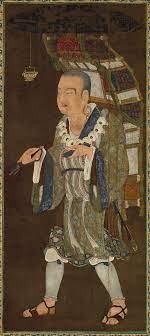Chinese travelers to India have been an integral part of the historical exchange between the two great civilizations. These travelers played a crucial role in bringing the cultural, religious, and philosophical traditions of India to China and vice versa. In this article, we will explore the journey of Chinese travelers to India and their contributions to the cultural exchange between the two nations.

Table of Contents
Fa Xian
Fa Xian was a Chinese Buddhist monk who traveled to India in the early 5th century AD during the reign of Chandragupta II. His primary objective was to acquire Buddhist texts that were not available in China. During his journey, Fa Xian visited several sacred sites of Buddhism, including Bodh Gaya, Sarnath, and Kushinagar. He collected Buddhist scriptures and manuscripts and brought them back to China, where they played a crucial role in the development of Buddhism in the country.
He also visited the ancient kingdom of Magadha, where he studied under several Buddhist masters. Fa Xian collected a vast number of Buddhist texts and manuscripts, including the Mahaprajnaparamita Sutra, which he brought back to China.
Fa Xian’s journey to India was remarkable for several reasons. First, he traveled to India during a time when travel was dangerous and difficult. Second, he collected a vast number of Buddhist texts and manuscripts, which played a crucial role in the development of Buddhism in China. Finally, his journey helped to establish a cultural exchange between China and India that would continue for centuries.
Xuanzang
Xuanzang, also known as Hsuan-Tsang was a Chinese Buddhist monk who traveled to India in the 7th century AD. His primary objective was to acquire Buddhist texts and deepen his understanding of Buddhist philosophy. During his journey, Xuanzang visited several sacred sites of Buddhism and studied under renowned Buddhist scholars. He collected a vast number of Buddhist texts and manuscripts, including the famous Diamond Sutra, and brought them back to China. Xuanzang’s journey and his translations of Buddhist texts played a crucial role in the development of Buddhism in China.
I-tsing
He was a Chinese Buddhist monk who traveled to India in the 7th century AD. His primary objective was to study the Vinaya, the code of conduct for Buddhist monks. During his journey, he visited several sacred sites of Buddhism and studied under renowned Buddhist scholars. He collected a vast amount of knowledge about the Vinaya and brought it back to China. Yijing’s journey and his translations of Buddhist texts played a crucial role in the development of Buddhism in China.
Contributions of Chinese Traveler
The Chinese travelers to India made significant contributions to the cultural exchange between the two nations. They introduced Buddhist philosophy, literature, and art to China, and they played a crucial role in the development of Buddhism in the country. They also brought back a wealth of knowledge about Indian culture and philosophy, which influenced Chinese art, literature, and philosophy. The journey of these travelers played a crucial role in shaping the world as we know it today.
Conclusion
The journey of Chinese travelers to India is a testament to the historical exchange between the two great civilizations. These travelers played a crucial role in introducing Buddhist philosophy, literature, and art to China, and they brought back a wealth of knowledge about Indian culture and philosophy. The exchange of ideas, knowledge, and traditions between China and India has played a significant role in shaping the world as we know it today, and the journey of these travelers is a crucial chapter in this exchange.
Important Links